|
||||
|
Welcome to Frontierland’s rustic Indian Village on the shores of the Rivers of America. Representing many tribes, the Indian Village presents the culture, customs, and arts of Native Americans. Wander among teepees of the Plains Indians, an Iroquois birch bark longhouse, and a cedar plank house and totem poles of Indians of the Pacific Northwest. There’s even an Indian burial ground. Meet the full-blooded Indian Chief. At the Ceremonial Dance Circle, watch colorful performances of authentic dances (summer, weekends, and holidays only). Buy authentic crafts at the Indian Trading Post. At the Indian Village Dugout, enjoy mile-long hot dogs, beverages, and cookies. Grab an oar and climb aboard one of the Indian War Canoes—the ride where you provide the propulsion. |
||||
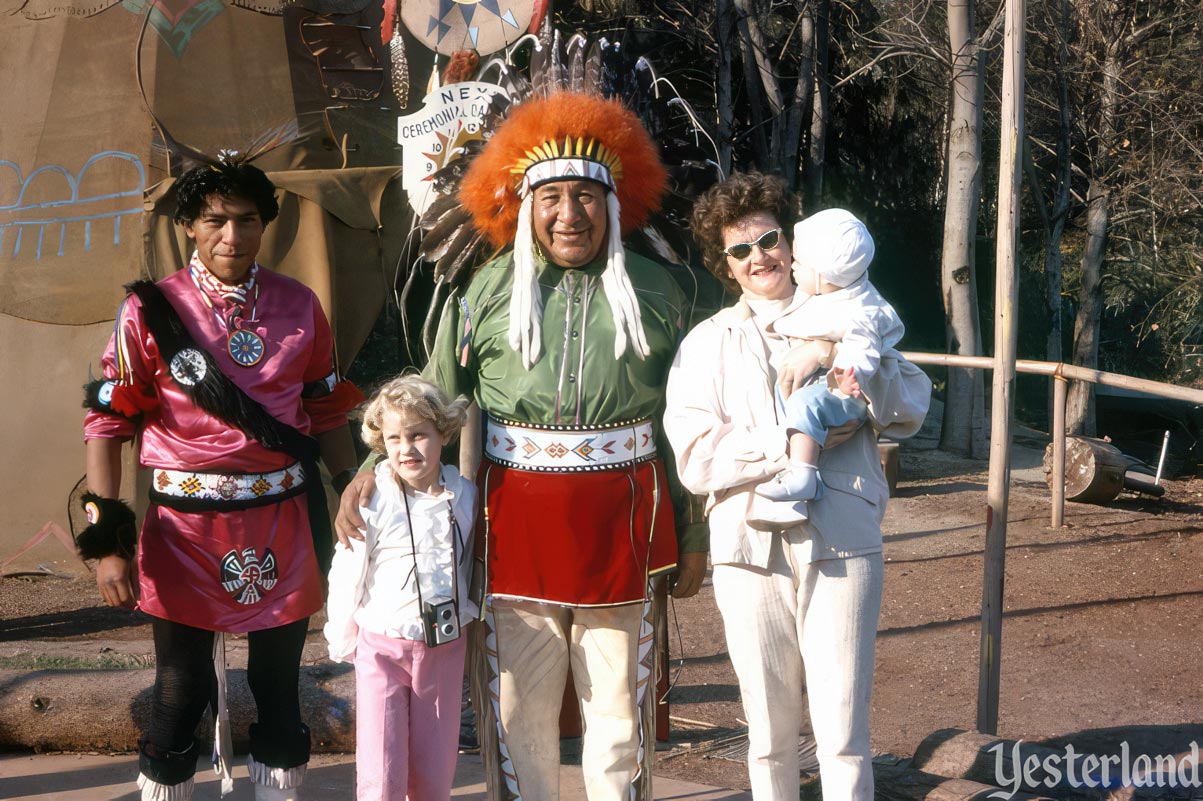
Photo by Charles R. Lympany, circa 1961, courtesy of Chris Taylor “Chief White Horse” (Truman W. Dailey) posing with guests |
||||
|
|
||||
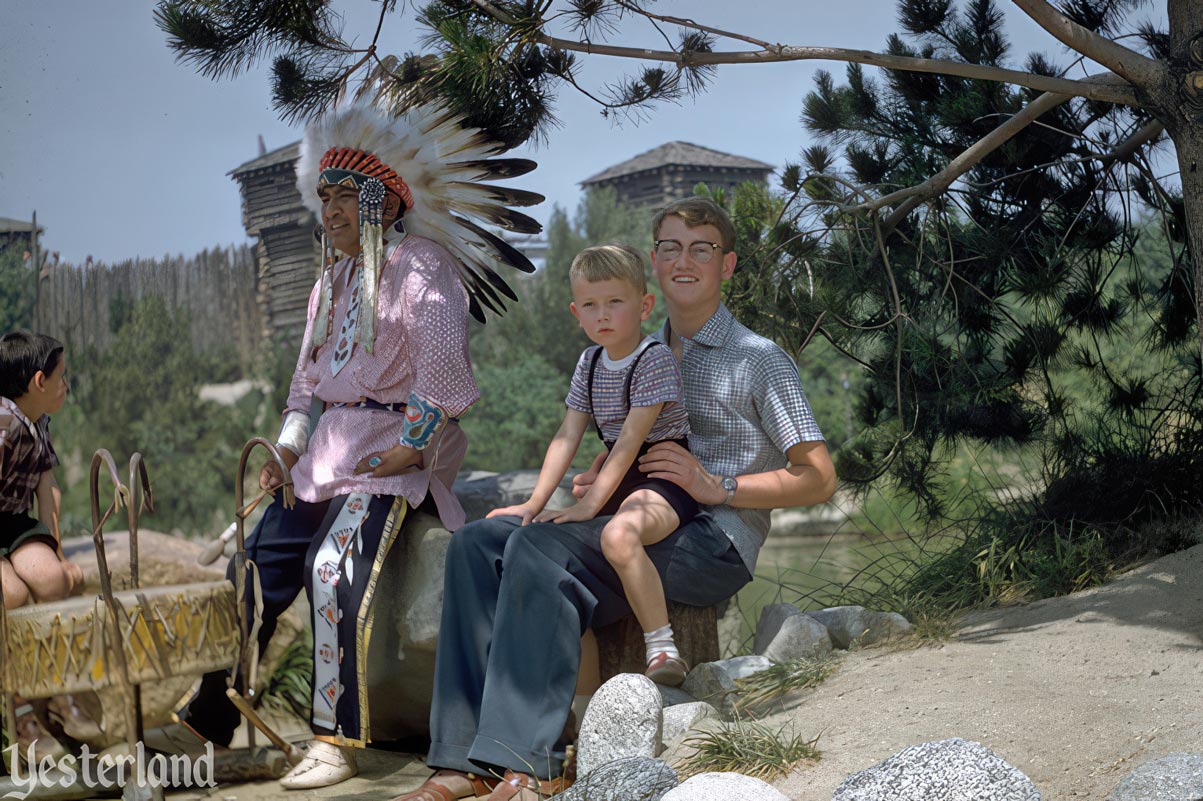
Photo by Helmut Weiss, 1958 Posing with Fort Wilderness in the background |
||||
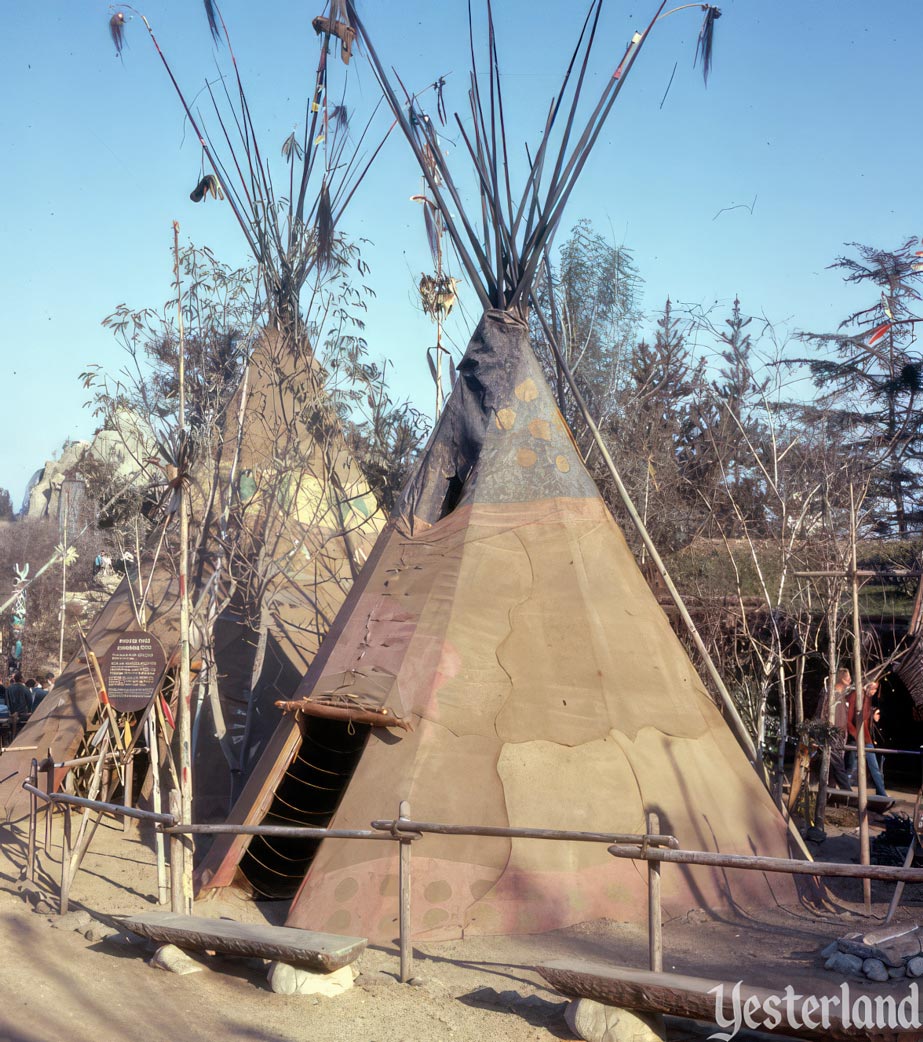
Photo by Charles R. Lympany, circa 1961, courtesy of Chris Taylor Teepees of the Plains |
||||
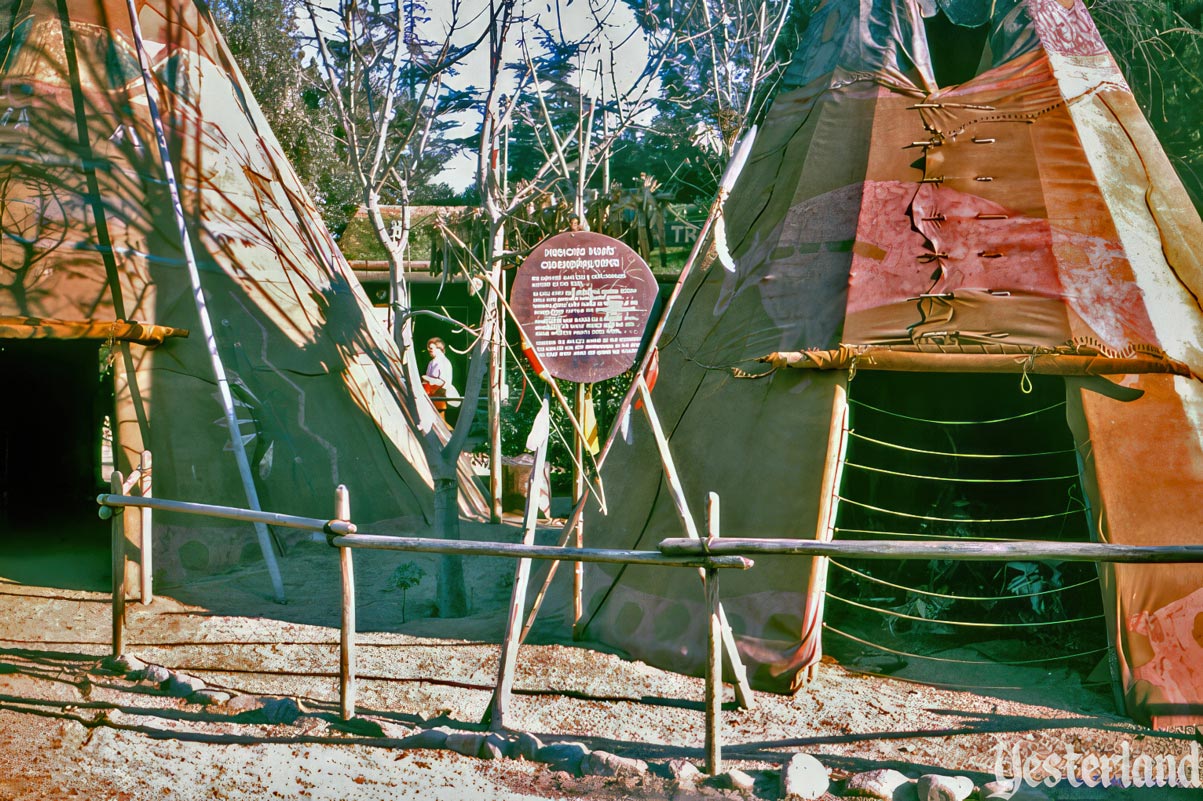
Photo by Charles R. Lympany, circa 1961, courtesy of Chris Taylor A chance to look inside a teepee—but not to go inside |
||||
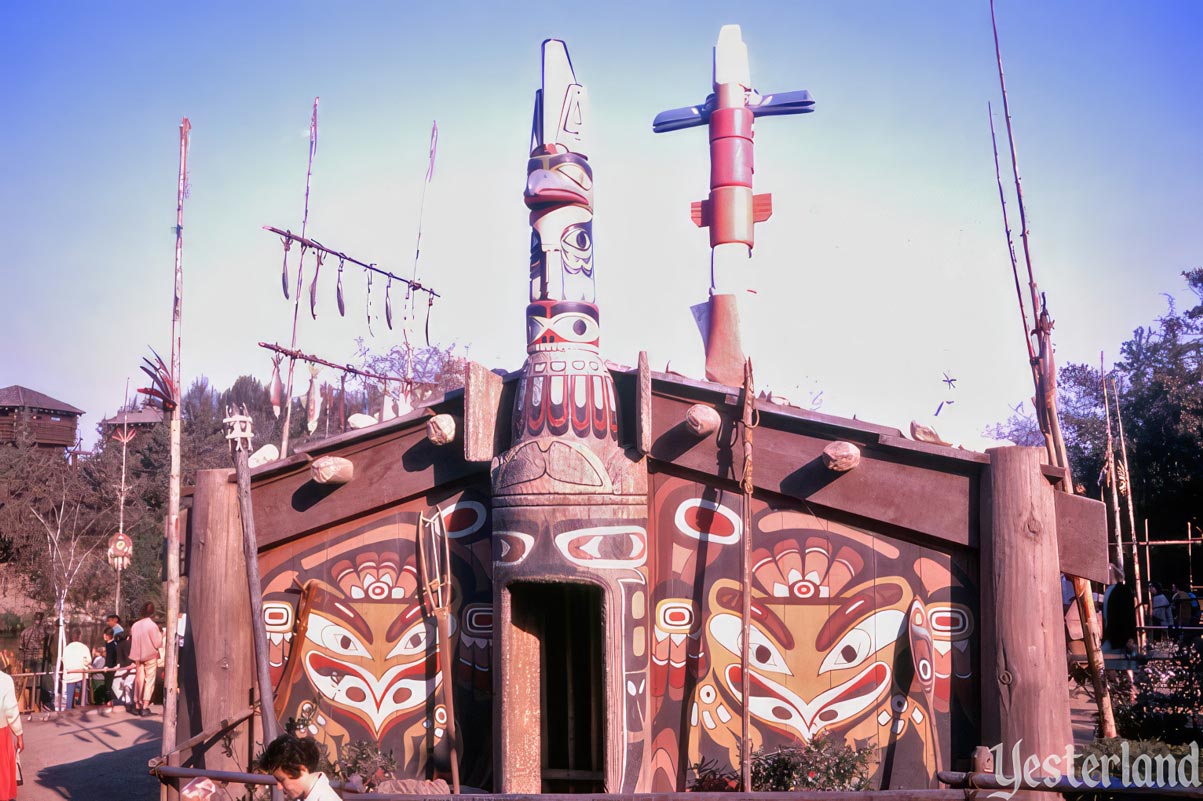
Photo by Charles R. Lympany, circa 1961, courtesy of Chris Taylor Northwest Coast decorated plank house |
||||
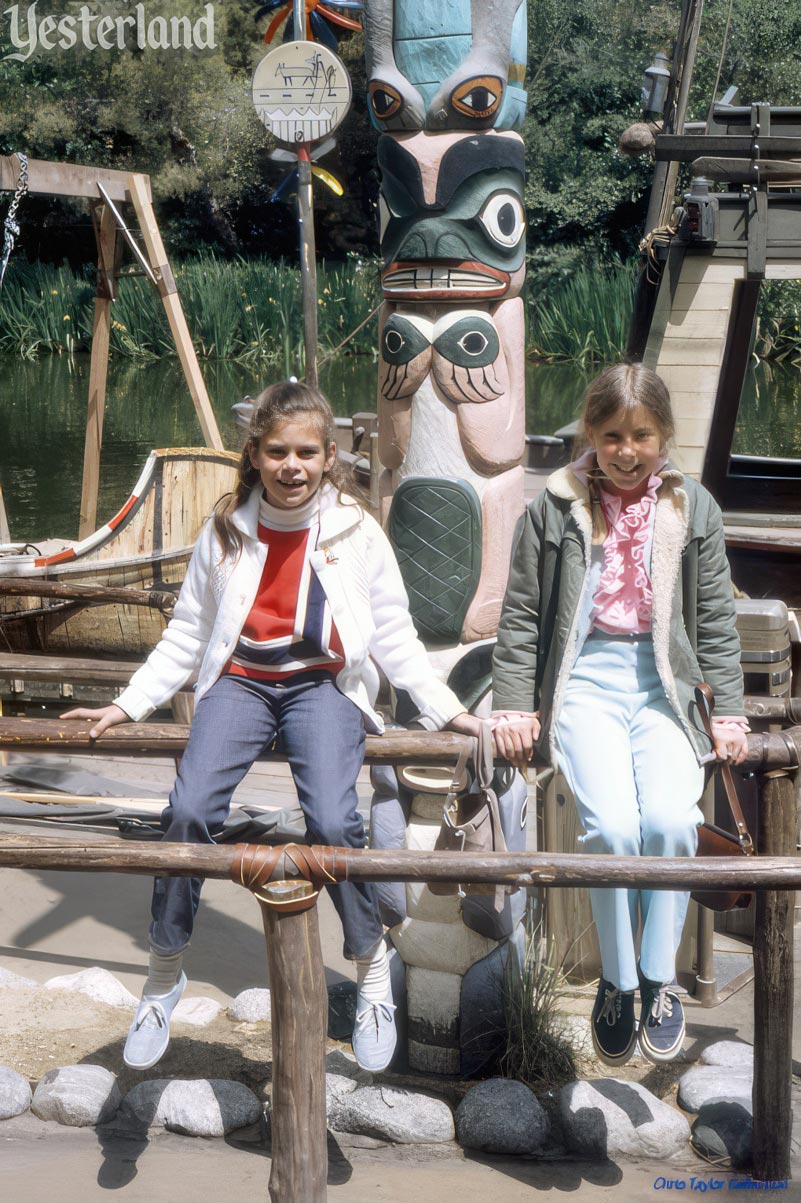
Photo by Charles R. Lympany, circa 1961, courtesy of Chris Taylor Northwest Coast totem pole |
||||
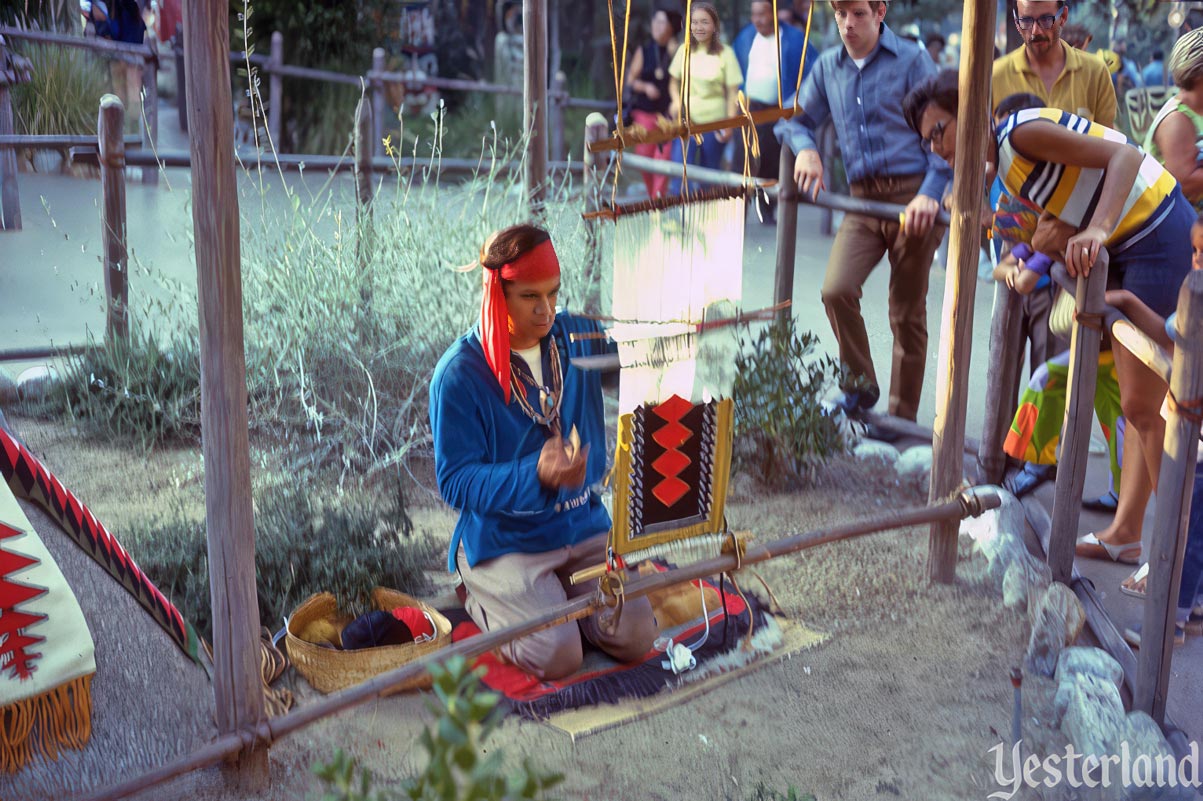
Photo by Werner Weiss, 1969 Weaving demonstration |
||||
|
|
||||
|
The first Indian Village at Disneyland opened in 1955 in Frontierland, near Adventureland. It made sense to feature American Indians in Frontierland. On the relatively new medium of television, Westerns—shows featuring “Cowboys and Indians”—were king in the 1950s. In 1956, the Indian Village moved to the location that it would occupy until 1971. To reach the Indian Village, guests walked through a tunnel to a distant dead-end corner of the park. According to a May 13, 1956 article in the Los Angeles Times, the “completely new Indian Village in Frontierland” cost $100,000. It was part of Disneyland’s $2 million expansion program in 1956, which also included the Disneyland Skyway ($300,000), the Rainbow Caverns Mine Ride ($500,000), Storybook Land ($200,000), and Tom Sawyer Island ($250,000). |
||||
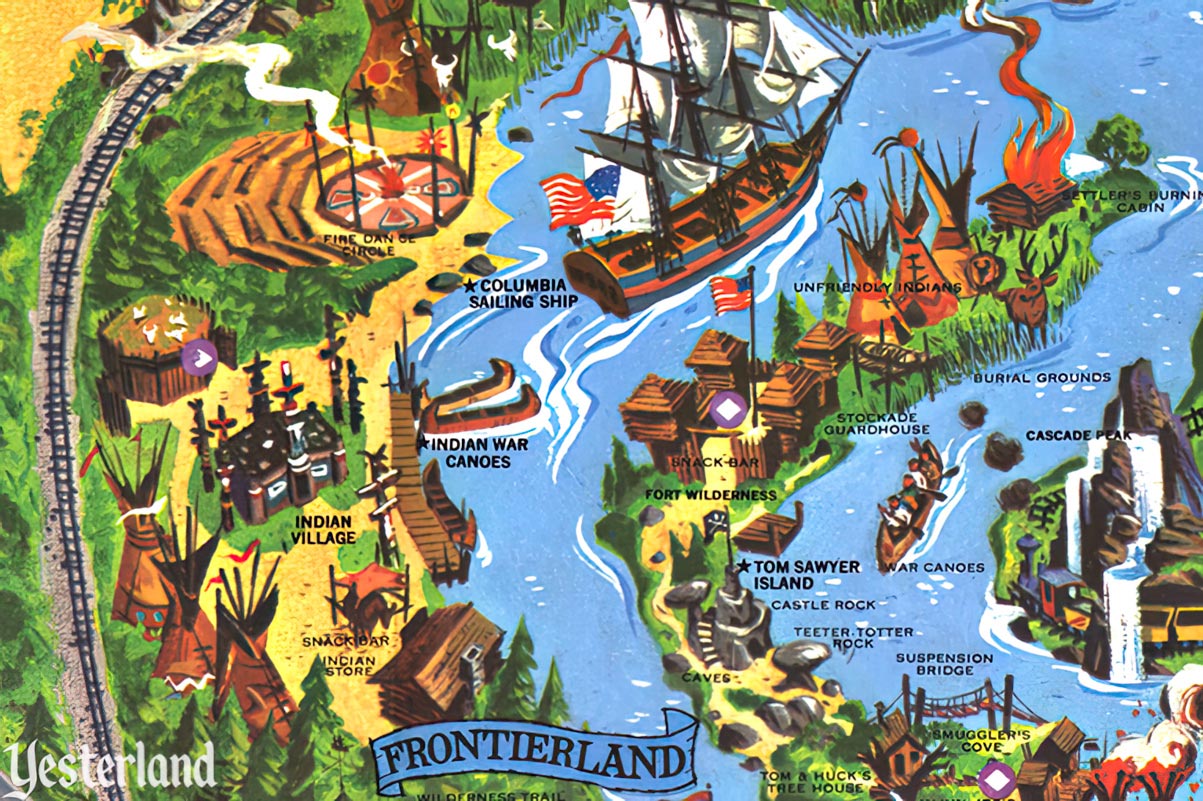
Snippet from 1968 Disneyland Souvenir Map © Walt Disney Productions Indian Village on the 1968 Disneyland Souvenir Map |
||||
|
Aside from some enhancements in 1962, the Indian Village did not change much over the course of 16 years. In 1972, a new land, Bear Country (now Critter Country), featuring the Country Bear Jamboree, replaced the Indian Village. The tunnel became an open air walkway. Indian War Canoes became Davy Crockett’s Explorer Canoes. The Indian Trading Post kept its name and theme until 1989, when it became the Briar Patch due to its proximity to Splash Mountain, themed to Walt Disney’s Song of the South (1946). There continued to be American Indian villages along the Rivers of America—but only tableaus with mostly simple animatronics, not anything guests could enter. |
||||
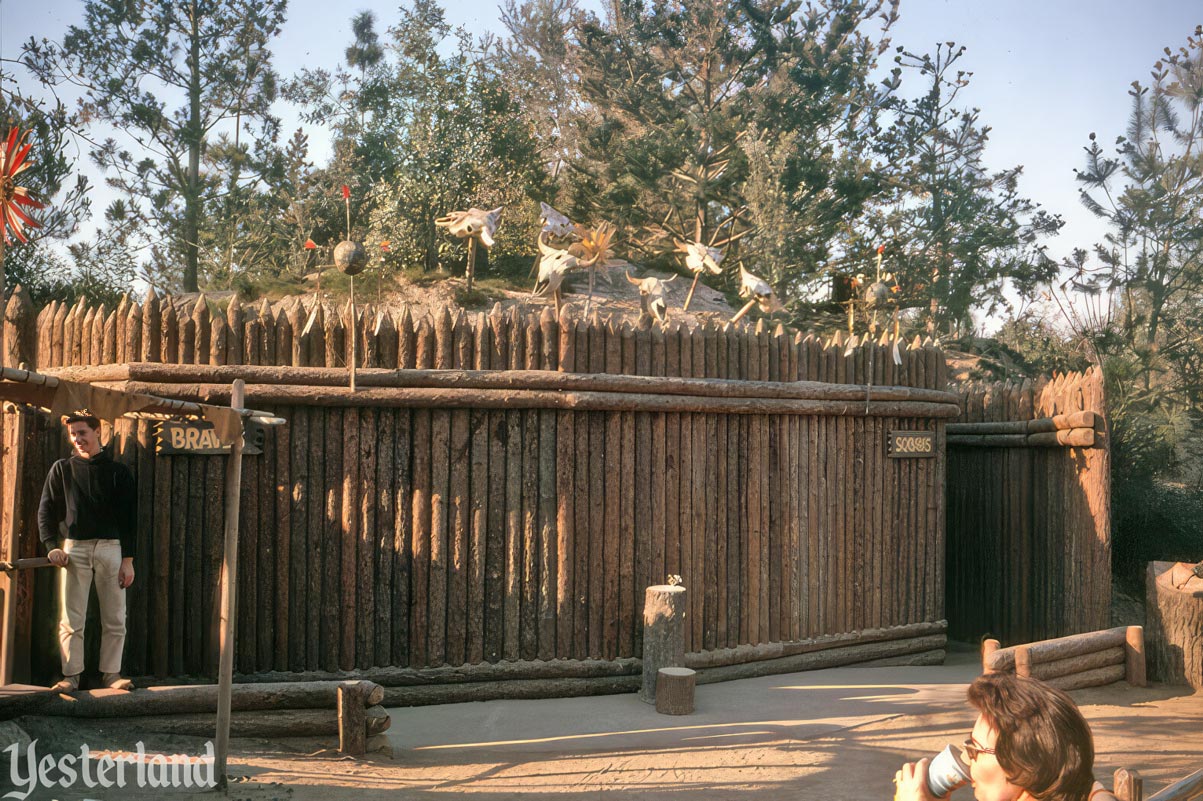
Photo by Charles R. Lympany, circa 1961, courtesy of Chris Taylor Restrooms |
||||
|
By the norms of the mid-20th century, Disneyland’s Indian Village was authentic and respectful. Interpretive signs described how the parts of the village represented different Indian Nations and how the structures would have been used. The Native American cast members were encouraged to share their cultures with park guests. The ceremonial dances and craft demonstrations were genuine. Disneyland’s “Chief White Horse”—Truman Washington Dailey (1898-1996)—was not just someone who looked the part. As the last fluent speaker of the Otoe-Missouria language, he did much to preserve and pass along his knowledge, history, traditions, and language. He is the subject of a doctoral dissertation and a Wikipedia entry. There were also elements that would not pass muster today. The restrooms were labeled “braves” and “squaws”—terms that are now considered offensive. The term “Indian Chief” is now controversial. Setting out in an Indian War Canoe as a “war party” must have sounded better in 1956 than it does today. And then there’s the issue of a theme park putting “full-blooded Indians” on display. But everyone should agree that Disneyland’s Indian Village was $100,000 well spent by Walt Disney. |
||||
|
|
Click here to post comments at MiceChat about this article.
© 2023 Werner Weiss — Disclaimers, Copyright, and Trademarks Updated June 1, 2023 |
|||